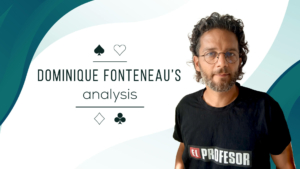
The fastest and most effective ways to build a winning bridge partnership.
Only by having a full understanding of your partner’s approach to bidding and defence can you build a really successful partnership.

Tune up your partnership bidding and defence using techniques only possible since the development of Funbridge. Forget declarer play for now as this is an individual activity you can practice by yourself.
Here are three separate ideas to help your partnership, with only one requiring you to be face to face with your partner.
Practice routine 1:
This routine works best if your system is similar to one of the Funbridge ‘off the shelf’ systems or you have configured a ‘Free profile’ system close to your own.
You and your partner should sit together in front of a screen. Open ‘Face the Elites’ in the Practice section and commence bidding.
Discuss and agree (or disagree) each bid with your partner before you make it. This is where you learn how your partner thinks, and vice versa. This is fast, real time practice together. It provides opportunity for discussion as you go and quality benchmarks to compare your results.
At the end of the auction:
If you are declarer
Click on Withdraw from the deal and compare your contract to that of around 70 Elite Funbridge players. Discuss the result with your partner then move on the next hand. Don’t waste time on hand analysis. If most of the Elites are in the same contract, it is probably the right one.
If you are defending
Play the hand but, as you do, discuss and agree overall defence strategy and individual carding with your partner. Compare your result with the Elites. Funbridge puts most of the points north south so you will spend more time practicing bidding than defending.
It is worth taking the time to play the defence cards to understand how you each see overall defence strategy and which cards you might play and signal with, but don’t waste time on declarer play or hand analysis.
Practice routine 2:
This routine is great for focussing on areas of bidding where you may be weak.
You and your partner need to be logged in at the same time and have a voice/phone link up.
- From the bottom of home screen, select ‘Friends’
- Select your partner.
- Select ‘Practice with my friend’ from the bottom right side of the screen
Funbridge will show you an extensive menu of bidding sequences you might want to practice. For example, Responses to 1NT or 2NT. Select your preferred topic from the list and Funbridge will send an invitation to your partner (the invitation lapses after one minute).
Once your partner accepts your invitation, you can commence bidding using your own bidding system. Talk about problems as they arise rather than blundering through and discussing them at the end.
The objective is to agree/improve your system and understand your partner’s thoughts, not be judged on whether or you reached a makeable contract. Again, don’t waste time on declarer play or detailed hand analysis.
Practice routine 3:
Funbridge does not enable you to view another player’s results unless you have played in the same tournament.
To make best use of your Funbridge time, try to ensure you both play some of the same tournaments. The more often you do this the better. Two or three tournaments a week is recommended.
Obvious tournament choices include:
- Tournaments of the day – 20deals scored by matchpoints or IMPS depending on what you want to practice.
- Exclusive Tournaments – various numbers of deals (e.g. Funbridge: Milan Macura MP or IMP, 8 deals. Bridgevid- Pete Hollands, 8 deals).
Review and critique your partner’s bidding. Play on each hand having regard to the results achieved by Elite and Series 1 players who have also played the hand. Discuss with your partner where and why you might do things differently.
Article supplied by Tony Abbott, Australia



